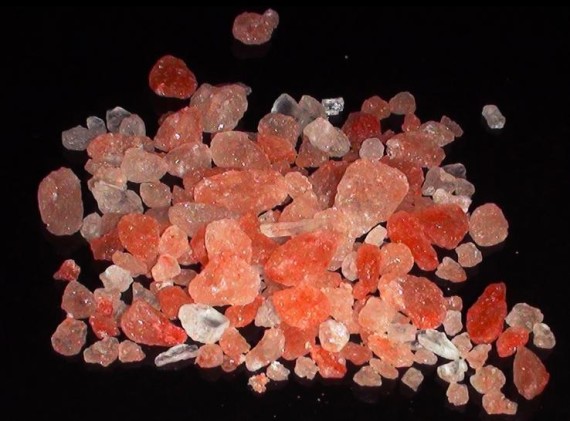This article has been reposted from Green Building Elements sister site CleanTechnica.
Bacteriorhodopsin — an intriguing protein found within the membranes of the ancient microorganisms living in the desert salt flats of California and Nevada — may allow for the cheap, efficient production of “environmentally friendly” hydrogen fuel from nothing but sunlight and saltwater, according to new research from the US Department of Energy’s Argonne National Laboratory.

The pink color of salt lakes is caused by salt-loving microorganisms, called halobacteria.
Image Credit: DOE/Argonne National Laboratory
By combining bacteriorhodopsin with semiconducting nano-particles, the researchers were able to create a new system that utilizes light to spark a catalytic process that results in hydrogen fuel being produced.
The great potential of titanium dioxide nanoparticles, with regard to light-based reactions, has long been known to those in the scientific community, at least as far back as the early 1970s, when researchers learned that, by exposing a titanium dioxide electrode to bright ultraviolet light, you could “split” water molecules into its component elements — a phenomenon now known as the Honda-Fujishima effect.
Since that discovery, much work has been done in an attempt to “extend the light reactivity of titanium dioxide photocatalysts into the visible part of the spectrum,” Argonne National Laboratory writes. ”The promise of these photocatalysts prompted scientists to experiment with different modifications to their basic chemistry in hope of making the reaction more efficient.”
//
//
//
//
“Titanium dioxide alone reacts with ultraviolet light, but not with visible light, so we used biological photoreactive molecules as a building block to create a hybrid system that could use visible light efficiently,” stated Argonne researcher Elena Rozhkova.
It was for this purpose that the researchers turned to bacteriorhodopsin — the protein responsible for the strange purple color seen in many of the salt flats throughout California and Nevada. Bacteriorhodopsin utilizes sunlight as a means of powering its function as a “proton pump” — proton pumps are the proteins “that typically straddle a cellular membrane and transfer protons from inside the cell to the extracellular space.”

Image Credit: Argonne National Laboratory
In the new system, the protons that are provided by the bacteriorhodopsin are then combined “with free electrons at small platinum sites interspersed in the titanium dioxide matrix.”
“The platinum nanoparticles are essential for creating a distinct spot for the production of the hydrogen molecule,” stated Peng Wang, a researcher at Argonne’s Center for Nanoscale Materials.
“It is interesting that in biology, bacteriorhodopsin does not naturally participate in these kind of reactions,” Rozhkova stated. “Its natural function really doesn’t have much to do at all with creating hydrogen. But as part of this hybrid, it helps make hydrogen under white light and at environmentally friendly conditions.”
The newly created bio-assisted hybrid photocatalyst has been found to perform considerably better than most other similar systems that are currently out there. The researchers think that the new system could be a cost-effective means of producing hydrogen fuel — utilizing the world’s enormous resources of light and saltwater for the production of “green” energy.
[source: http://feeds.importantmedia.org/~r/IM-greenbuildingelements/~3/aXVOLPmWlMM/]

Leave a Reply
You must be logged in to post a comment.